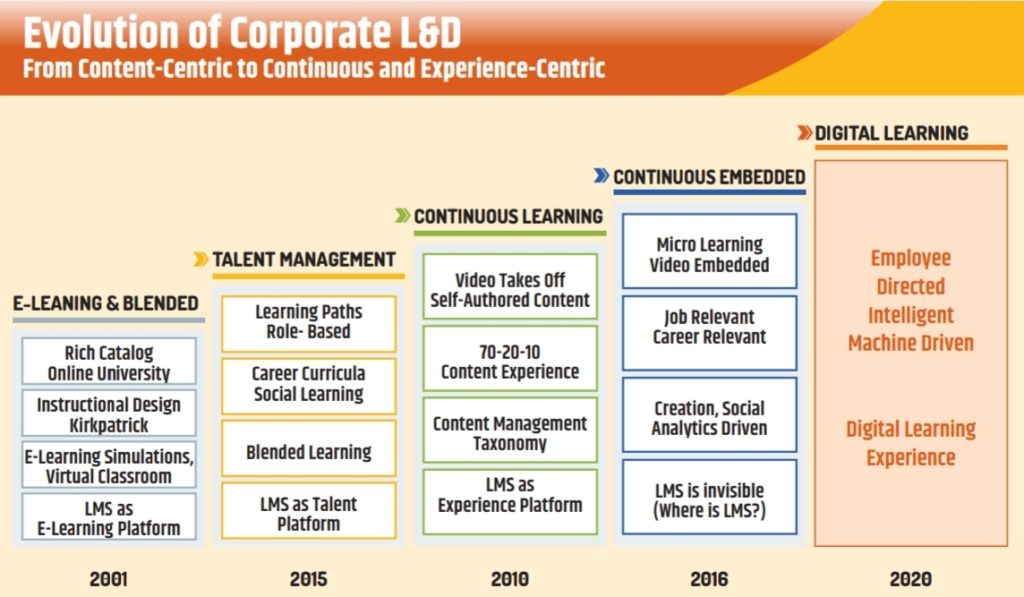Digital Learning industry is booming, and will grow to USD 325 Bn by 2025 globally according to Forbes. Closer home, it shows a 25% growth rate in India and is projected to be a USD 1.96 Bn industry by 2021. LinkedIn’s 2019 Workplace Learning report says that 59% of companies will increase spends on online learning, while 39% reduce spends on Instructor Led Trainings (ILTs). The digital age seems to have truly arrived. Or has it?
Despite widespread adoption, expanding budgets and a copious push from HR, e-learning completion rates remain abysmally low, with estimates ranging from 6% to 15%.While exceptions exist, many companies still struggle to engage learners. Some commonly faced issues include:
- Courses are seen as boring or too long
- Technology issues mar user experience
- Content too generic
- Passive information download or information overload
- Low linkage to learning objectives
In summary, while digital learning holds tremendous promise, a lot more needs to be done to unlock its true value.
L&D Evolution And Digital Learning Maturity
While the below model from Bersin (Deloitte) shows 5 stages of L&D evolution with stage 4 (Continuous Embedded) already reached in 2016, the reality for most organizations globally and in India could be very different!

Still this serves as a good road-map and framework for us to evaluate our own organizations’ maturity when it comes to digital learning. Overall, the need is to move away from the “course-mindset” or content centric thinking and bring user experience and engagement at center-stage.
But how do we focus on user experience, and what does that mean in the real-world? It means that rather than throwing generic content at the user and expecting them to make sense of it in their lives, the learning solution needs to be job-relevant , personalized and embedded from the word go. In-fact, with plethora of free, high quality content available on sources such as YouTube, L&D may no longer be expected to acquire content from outside. Instead, our role is now being re-defined to Create Experiences to leverage available content and provide Context that creates user engagement and furthers organizational goals.
Practical Ideas For Creating User Experience/Engagement
User engagement doesn’t have to just mean having a leader board of top learners. Some ideas:
- Create a Cohort – Digital learning doesn’t mean that we take away the Social aspects of learning. Creating a cohort not only helps drive completion as members push each other, but also provides them with partners who can expand and adapt the content to the organizational context
- Targeted Campaigns – Segment your users into different groups and target your communication with the most relevant and personalized content- after all it’s the Age of Hyper Personalization. Similarly, campaigns can be run different times of the year aligned to the Organization Goals, People Processes or just driving self-learning.
Leverage your Leaders
This is the most important strategy to further organizational learning, and offers multiple options:
- Learning Ambassadors – What if at the next employee meeting a leader used a video from your e-learning module to make a point, say about change management? It not only provides an effective tool to drive desired behaviors, but also establishes how your e-learning content is relevant to the organization(may be your organization is actually going through Organization Transformation at that point)
- Leader Videos – Expanding on the idea above, you can record and circulate videos of leaders speaking about specific learning resources and what it meant to them, and how it helped them in real situations
- Sessions by Leaders – Leaders and Internal experts can hold short sessions around the learning topics. This is especially useful for cohorts, further boosting commitment with the program and ensuring that the learning are applied back in the organization
Overall, the aim is to contextualize the learning agenda for greater impact. Below I share a real life situation to further illustrate how multiple strategies can be combined to achieve the desired result.
Case Study – Developing Sustainability Leadership -Driven by the organization’s need to embed sustainability in everything we do, L&D was tasked with creating Sustainability Champions in the organization. L&D created a cohort of 20 key leaders, all of whom were enrolled for a 6 week MOOC on the topic. Over the 6 week period we held 3 Face to Face sessions by internal leaders including the final one addressed by the CEO. Serving as platforms for discussion and debate, the sessions not only helped the participants learn to apply the concepts on real issues faced by the organization, but also helped keep them engaged throughout and even cascade the learning to the wider organization.
Beyond Courses and Platforms
- Digital Learning is not just limited to courses or platforms, but a methodology to further the organizational learning goals.
- Virtual, Live Learning Sessions may sound like a rehash from the past (classrooms via video conference), but newer communication technologies are changing the game completely as seen in the case studies below.
Case Study – Virtual SME sessions -The organization wanted a talent group to have a complete overview of all disciplines and processes of the organization. Since these 100+ employees were spread across locations, L&D organized live virtual sessions which allowed for two way communication & interaction. Sessions recordings and materials were also shared with employees for ready reference.
Case Study – Virtual L&D Conference –Global L&D teams across countries came together virtually for a full-week conference aimed at capability building for L&D COE; promote breakthrough thinking and creating the future L&D roadmap. The week was packed with sessions by internal senior leadership, working groups, virtual games, presentation by team members and also external partners for an outside -in perspective.
Podcasts -are emerging medium that offers diverse, detailed perspectives to a vast variety of topics, mostly available for free. The advantage with such Audio Content is that it can enable users to consume content in situations usually unavailable for learning such as while driving to work, exercising etc.
Book Summaries offer a practical way for leaders absorb latest concepts and theories often compressed in a 10-15 page format. Many providers offer such summaries in audio format as well, further easing consumption. These summaries in fact, are a perfect fodder for organizing Book Discussion groups where the leaders also join in, help cascade these concepts to the audience.
Conclusion – The Future Awaits
Technological advances are transforming the workplace, and L&D is no exception. Emerging trends such as Gamification, Micro Learning and Virtual Reality based learning are indicative of how learner experience centric thinking is shaping future learning solutions. As Artificial Intelligence matures, bots may soon be able to guide learners, predict learner behavior, and personalize the learning in real time. A truly exciting time to be alive!
Bibliography– Forbes, LinkedIn, Warwick, http://www.businessworld.in/article/E-Learning-Is-Transforming-The-Face-Of-Education-In-India/01-12-2018-164717/









